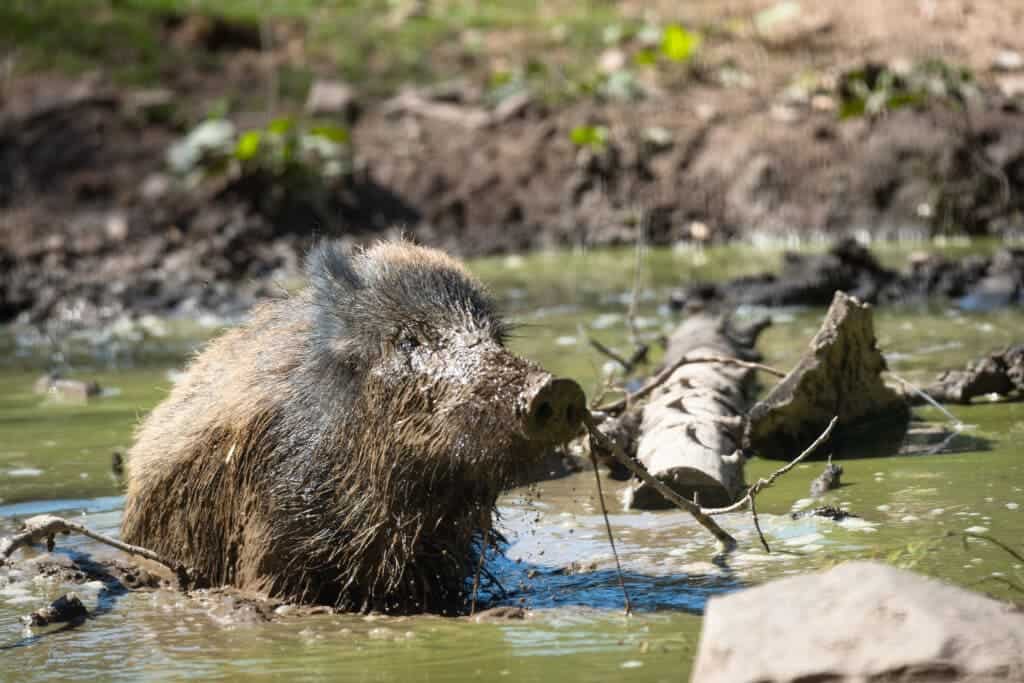Usually tagged as ecosystem destroyers, wild boars can actually help foster biodiverse rainforests in their native habitats, according to a new study. Researchers found that the wild boars in Malaysian rainforests are critical to maintaining diverse and balanced tree communities – all thanks to the beneficial effects of the nesting practices of the boars.

Most wild pigs (Sus scrofa) are a mixture of domestic breeds and European wild boar. They have significantly expanded over the last two decades, reaching unmanageable numbers in some regions. In the US alone, there are nine million of them, with their population expanding from 17 states to at least 39 amid efforts to control their expansion.
They are frequently described as nuisances and pests, as they compete with native animals for food, spread environmental weeds, and destroy vegetation. They have degraded the habitats of species such as the white-bellied frog and the corroboree frog. Plus, they are hosts of pathogens and can carry diseases such as African swine fever.
But there’s actually much more behind their relationship with the environment, according to a recent study by researchers from the University of Queensland in Australia. Dr. Matthew Luskin and his team focused on disturbances from native wild boars in the tropical forest called Pasoh Research located in central peninsular Malaysia.
Pasoh is a large forest reserve with continuous connectivity to other forests and possesses a thriving wildlife community. Southeast Asian native pigs often complemented their omnivorous diet by crop-raiding on fruits in oil palm plantations, leading to much higher densities than in interior forest areas.
Pigs can suppress tree regeneration by eating seeds, rooting, and trampling seedlings. However, their most important impacts on tree saplings come from their nests, which pregnant pigs build to provide cover during birth and the first days of nursing. A single pig nest can include hundreds of tree saplings collected from a small area.
At Pasoh, nest building by pigs was identified as the main driver of a decline in tree sapling densities, without understanding how pig nesting affects tree diversity.
The researchers examined the patterns of tree sapling mortality due to pig nesting and linked this to changes in tree diversity from 2000 to 2005. They tagged 34,950 tree saplings in a plot of 25 hectares during an initial census and assessed the likelihood that they were later killed by pig nesting disturbances in subsequent years – comparing it to other sources.
Pig nesting was found to be responsible for at least 18% of sapling mortality at the study’s site. However, the quadrants that were disturbed by pigs had a much greater diversity than the other ones. While the study only covered five years, the findings are consistent with previous studies.
“Prior to giving birth, pigs build birthing nests made up of hundreds of tree seedlings, usually on flat, dry sites in the forest. As they build their nests, the pigs kill many of the dominant seedlings and inadvertently reduce the abundance of locally dominant tree species, but usually, not rarer local species, supporting tree diversity,” Matthew Luskin, the lead researcher, said in a statement.
While there’s a focus in many regions to manage overabundant pig populations, Luskin argues that the study hints at positive elements to maintaining pigs in an ecosystem. Nevertheless, as the fieldwork was done in Malaysia where pigs are natives, the impact of invasive pigs in other countries might not create the same effects.
That’s why the researchers are now designing new research to study the same pig processes in Australia, which has had difficulties dealing with wild boars. The team will also compare the initial results from Malaysia with conditions in another Malaysian forest that is heavily hunted and where many native pigs have been killed throughout the years.
The study was published in the journal Proceedings of the Royal Society B.


